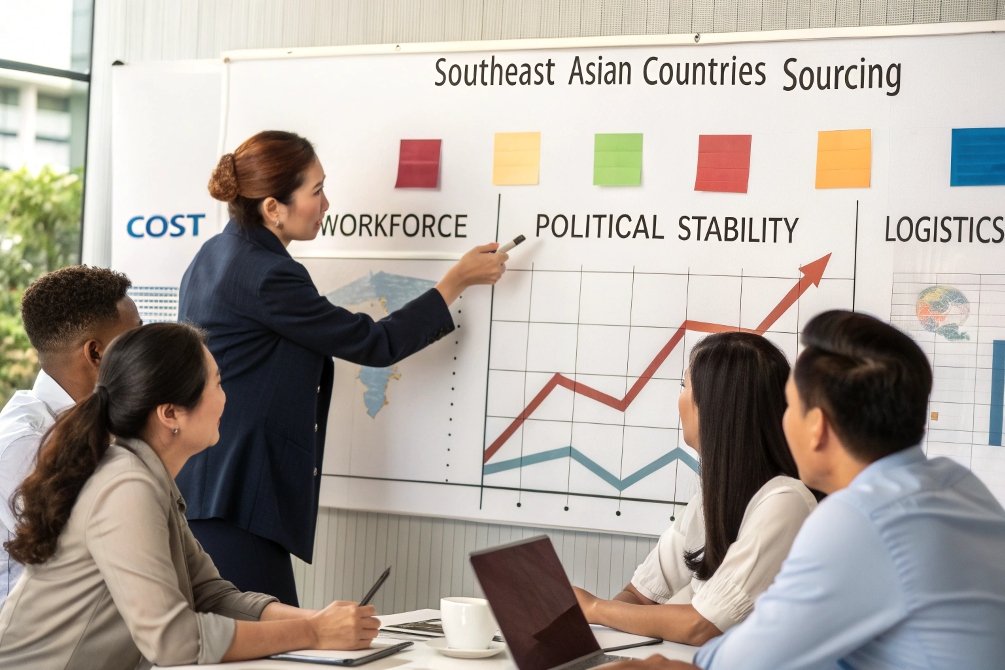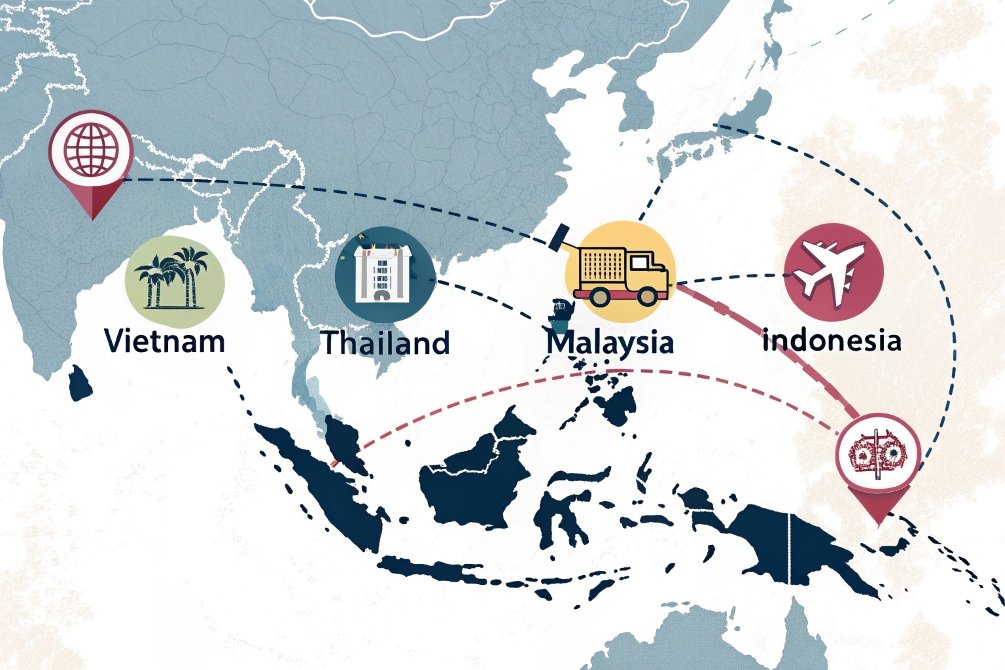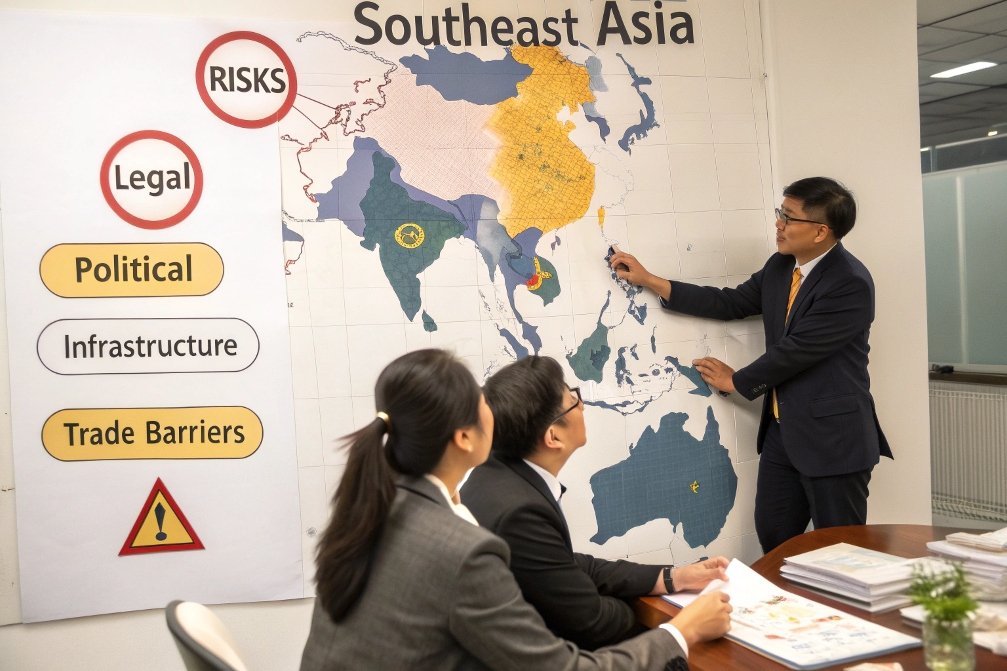
When it comes to managing a global supply chain, diversification is often seen as a strategy to mitigate risk. While Vietnam has become a popular choice for many businesses, expanding your supply chain to other Southeast Asian countries like Thailand, Malaysia, or Indonesia can offer unique advantages. However, this move also comes with its own set of challenges.
Diversifying your supply chain across Southeast Asia can help mitigate risks, reduce dependency on a single country, and potentially lower costs. But understanding the benefits, comparisons, and risks is essential for making an informed decision.
In this article, we will explore the benefits of supply chain diversification1 in Southeast Asia, compare Thailand, Malaysia, and Indonesia to Vietnam, and look at the risks involved when expanding your supply chain to these countries.
What Are the Benefits of Diversifying Your Supply Chain to Southeast Asia?
Diversifying your supply chain can offer numerous advantages. By spreading operations across multiple countries, you can reduce your exposure to risks such as political instability, natural disasters, or economic downturns that could disrupt production in one specific location.
Diversifying your supply chain to Southeast Asia offers flexibility, better risk management2, and the potential for cost optimization3.

Benefits of Diversification
| Benefit | Description |
|---|---|
| Risk Mitigation | Diversifying across countries reduces your dependence on one market, helping you avoid disruptions caused by political instability, supply chain bottlenecks, or natural disasters. |
| Cost Optimization | Different countries offer varying labor costs, tax incentives, and raw material availability, which can result in cost savings when appropriately leveraged. |
| Market Expansion | Expanding your supply chain allows easier access to new markets, potentially boosting sales and opening up more opportunities for growth. |
| Flexibility and Scalability | With multiple sourcing locations, you can scale up production in response to market demands without being limited to one region. |
From my experience, companies that diversify their supply chains across different countries are better equipped to navigate challenges and maintain smooth operations, even when one country faces an unexpected disruption. It’s all about having options.
How Do Thailand, Malaysia, and Indonesia Compare to Vietnam for Supply Chain Diversification?
Thailand, Malaysia, and Indonesia each have their own strengths and weaknesses when compared to Vietnam as a supply chain hub. While Vietnam is known for its competitive labor costs and growing manufacturing sector, these other Southeast Asian countries offer different benefits, such as established infrastructure, well-developed industries, and proximity to major markets.
Each country offers distinct advantages depending on your business needs. Thailand, Malaysia, and Indonesia might be more suitable for specific industries or needs that differ from what Vietnam offers.

Country Comparison for Supply Chain Diversification
| Country | Key Advantages | Key Disadvantages |
|---|---|---|
| Thailand | Strong infrastructure, established automotive and electronics industries, stable political environment. | Higher labor costs compared to Vietnam; regulatory challenges in certain industries. |
| Malaysia | Well-developed infrastructure, access to high-tech industries, strong trade agreements with major economies. | High dependency on specific industries (e.g., electronics), limited labor availability in certain sectors. |
| Indonesia | Large domestic market, competitive labor costs, growing manufacturing sector, strong in agriculture. | Political instability, regulatory complexity, infrastructure gaps in certain areas. |
| Vietnam | Low labor costs, young workforce, fast-growing manufacturing sector, close proximity to China. | Rising wages, political risks, reliance on certain industries. |
In my opinion, if you are looking for low-cost labor and a growing workforce, Vietnam is an excellent choice, but Thailand, Malaysia, and Indonesia could be ideal for businesses looking for infrastructure maturity or industry specialization.
What Risks Should You Consider When Expanding Your Supply Chain in Southeast Asia?
Expanding your supply chain across Southeast Asia is not without its risks. While diversification can reduce dependency, it also introduces new complexities. From logistical challenges to legal differences, there are several factors to keep in mind before making the jump.
The risks of supply chain expansion in Southeast Asia include legal issues, political instability, infrastructure limitations, and potential trade barriers.

Key Risks in Expanding Your Supply Chain
| Risk | Description |
|---|---|
| Legal and Regulatory Challenges | Each country has its own set of laws and regulations, which may change unexpectedly. Compliance with local regulations, including environmental, tax, and labor laws, can be complex. |
| Political Instability | Political shifts in any Southeast Asian country could disrupt business operations. Countries like Indonesia and Thailand are more politically volatile, which can create uncertainty. |
| Logistics and Infrastructure Limitations | While countries like Thailand have advanced infrastructure, others like Indonesia may have gaps in logistics, which could lead to delays or increased costs. |
| Trade Barriers and Tariffs | The introduction of new trade barriers, tariffs, or sanctions could disrupt the flow of goods between countries in the region. |
From my perspective, managing risk in Southeast Asia means staying updated on regulatory changes and understanding the political climate. Having a local team in place and cultivating relationships with local partners can help navigate some of these risks effectively.
Conclusion
Diversifying your supply chain to Southeast Asia presents both opportunities and challenges. Countries like Thailand, Malaysia, and Indonesia offer distinct advantages in terms of infrastructure, cost, and industry specialization. However, it’s essential to carefully assess the potential risks, including legal complexities, political instability, and logistical hurdles. By understanding the benefits and risks, businesses can make informed decisions that enhance their supply chain resilience and long-term success.
Understanding the advantages of supply chain diversification can help businesses make informed decisions about their operations. ↩
Exploring risk management strategies can provide insights into how to effectively mitigate potential disruptions in supply chains. ↩
Learning about cost optimization practices can help businesses maximize their efficiency and profitability in supply chain operations. ↩

